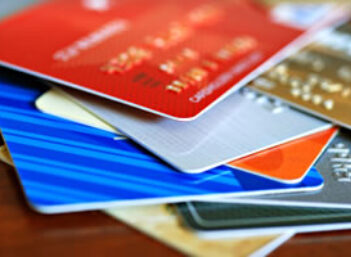What Is Mobile Banking?
The broadest definition of mobile banking refers to any banking activities conducted on a cell phone. Common functions of mobile banking include receiving text alerts for fraudulent activities, accessing your account via the bank’s app, and using the bank’s website on your mobile device.
Mobile Banking vs. Online Banking
Mobile banking and online banking both use the internet to access banking information, and most banks offer similar services via both (e.g. online bill pay, transferring funds, checking balances).
You can conduct online banking on your desktop, laptop, tablet, or phone. However, mobile banking only occurs when you access your account information on your tablet or phone, and it’s usually through a specially-designed mobile app.
How Mobile Banking Works
At its most basic, mobile banking is a text-based service. Users sign up for text-based interactions with their bank and receive a guide regarding the ‘commands’ they can text to conduct banking transactions. The most common commands include BAL (i.e. obtain account balance), TRA (i.e. transfer funds between accounts), and ACT (i.e. see account activity).
Banks also offer mobile access to their online banking. This is a version of online banking, but it’s only available on your phone. Banks must have a mobile-enabled website for this to work or users will find it difficult to submit any transactions.
The latest and most robust mobile banking option is a mobile banking app. Rather than logging in through a website, bank members can use the bank’s app instead. Most apps require two-factor authentication for safety purposes and offer additional services including:
Mobile check deposits (ie. taking a picture of your check and depositing it remotely)
Electronic money transfers between accounts
Bill pay
Viewing account balances
Mobile Banking Examples
Though every bank has different terms and conditions, here are a few common examples of mobile banking:
Example of Mobile Banking #1
You’re at the store and something catches your eye, but you aren’t sure whether you have enough funds in your bank account to cover the purchase. You log into your bank’s mobile app and – from the dashboard – you can check your account balance and decide whether you can afford the item.
Example of Mobile Banking #2
Your best friend pays you back for lunch via a check because she doesn’t have mobile banking. You don’t have the time to make a special trip to the bank, so you log into your bank’s mobile app. From the dashboard, you click ‘mobile deposit’ and take a picture of the front and back of the check. The sum will be deposited into your account according to your bank’s schedule – without going to a branch office.
Advantages of Mobile Banking
Mobile banking makes accessing account information and balances quick and easy. Money is typically accessible anywhere, as long as you have your cell phone. You can also pay friends and family, receive funds, and split checks effortlessly.
You’ll always have your account balance and banking information at your fingertips, which helps make more informed financial decisions.
Disadvantages of Mobile Banking
Some banks only offer limited services on their mobile apps so transactions and access to account information may be limited. This means that you might have to log into your account on a computer or even go to a local branch to complete your request.
One of the biggest disadvantages of mobile banking, however, revolves around security.
Is Mobile Banking Secure?
Though banks typically use top-notch security systems, there’s no completely foolproof way to ensure that your personal and financial information aren’t compromised.
To make it more difficult to access your account, mobile banking apps usually require two-factor authentication (typically a password and identity verification). Most banks send a code in an email or text message that you must receive and confirm to gain access to your bank account. This is a necessary step because most online predators won’t have access to your phone or email.
As with any type of banking, always take extra precautions to protect your information. If you ever feel unsure about an email or notification regarding your account, immediately contact your bank.
Types of Cyber Attacks
Cyber attacks can occur in many ways, but the most common include:
Fake Apps - Unverified mobile banking apps are developed by hackers to look identical to your bank’s verified app.
Mobile Ransomware - Hackers send mobile malware to hack into your phone and your bank data.
Phishing - Bots send malicious links that look like they’re from your bank so that you click on them and provide your personal information.
Malware - Crooks send malware that captures your keystrokes and steals your banking information.
Tips for More Secure Mobile Banking
Using these tips will ensure safer online banking by protecting your confidential information. If you’re ever in doubt about the legitimacy of an email, notification, or telephone call, immediately contact your bank for verification.
Use strong passwords with a combination of letters, numbers, and symbols.
Change your password every few months.
Don’t share your password with anyone.
Stick to your home network rather than banking on public Wi-Fi.
Download the official app from your bank.
Update your app every time there’s an available update.
Log out of the app every time you’re finished using it.
Regularly clear your browser cache so your information isn’t stored.
Use two-factor authentication (or facial recognition when available).
Never automatically save passwords in your phone.
Have a way to erase your phone’s data immediately if it’s stolen.
Sign up for online alerts each time account activity occurs.
Look for the “https://” and a “secure lock” in the URL bar so you’re connected to a secure website.




